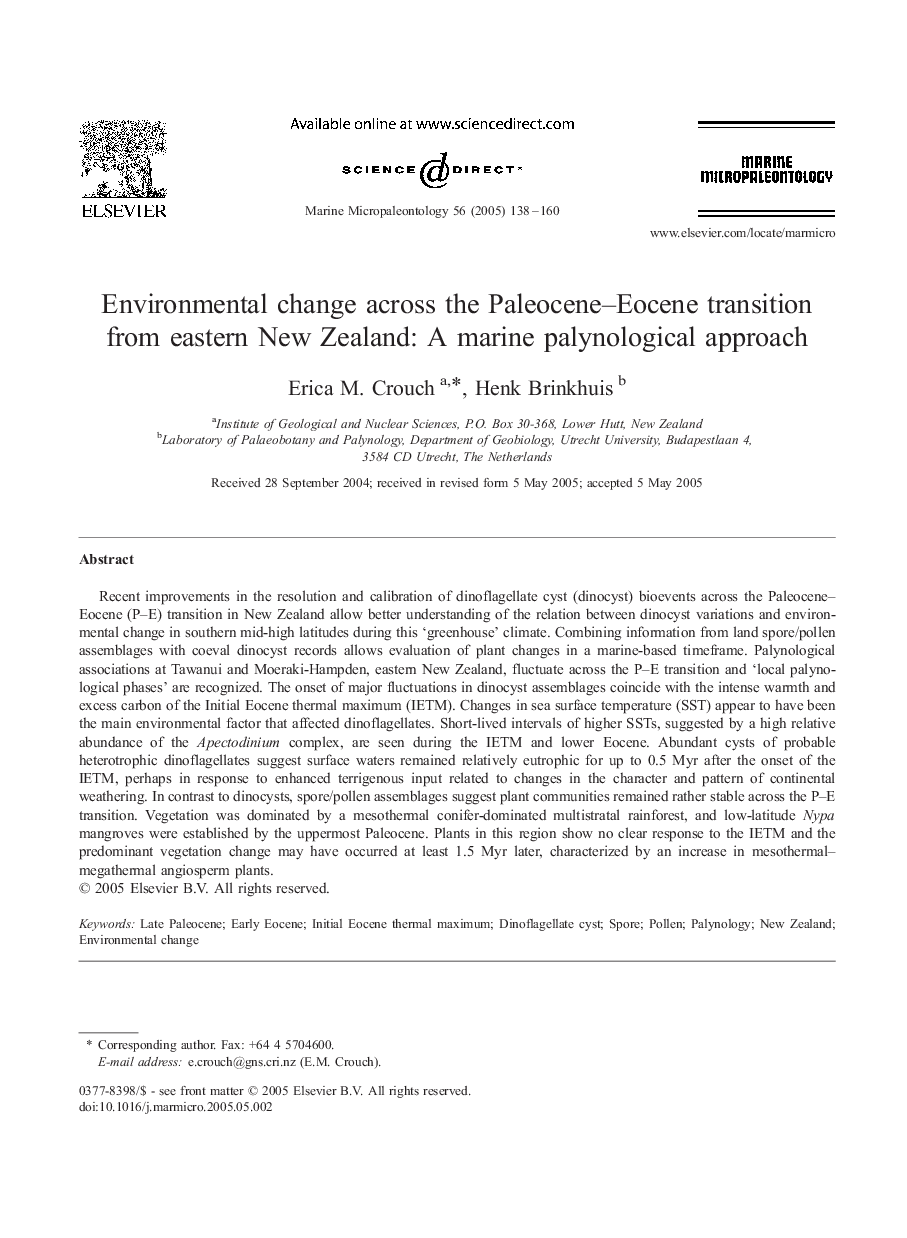| کد مقاله | کد نشریه | سال انتشار | مقاله انگلیسی | نسخه تمام متن |
|---|---|---|---|---|
| 9539638 | 1642236 | 2005 | 23 صفحه PDF | دانلود رایگان |
عنوان انگلیسی مقاله ISI
Environmental change across the Paleocene-Eocene transition from eastern New Zealand: A marine palynological approach
دانلود مقاله + سفارش ترجمه
دانلود مقاله ISI انگلیسی
رایگان برای ایرانیان
کلمات کلیدی
موضوعات مرتبط
مهندسی و علوم پایه
علوم زمین و سیارات
فسیل شناسی
پیش نمایش صفحه اول مقاله

چکیده انگلیسی
Recent improvements in the resolution and calibration of dinoflagellate cyst (dinocyst) bioevents across the Paleocene-Eocene (P-E) transition in New Zealand allow better understanding of the relation between dinocyst variations and environmental change in southern mid-high latitudes during this 'greenhouse' climate. Combining information from land spore/pollen assemblages with coeval dinocyst records allows evaluation of plant changes in a marine-based timeframe. Palynological associations at Tawanui and Moeraki-Hampden, eastern New Zealand, fluctuate across the P-E transition and 'local palynological phases' are recognized. The onset of major fluctuations in dinocyst assemblages coincide with the intense warmth and excess carbon of the Initial Eocene thermal maximum (IETM). Changes in sea surface temperature (SST) appear to have been the main environmental factor that affected dinoflagellates. Short-lived intervals of higher SSTs, suggested by a high relative abundance of the Apectodinium complex, are seen during the IETM and lower Eocene. Abundant cysts of probable heterotrophic dinoflagellates suggest surface waters remained relatively eutrophic for up to 0.5 Myr after the onset of the IETM, perhaps in response to enhanced terrigenous input related to changes in the character and pattern of continental weathering. In contrast to dinocysts, spore/pollen assemblages suggest plant communities remained rather stable across the P-E transition. Vegetation was dominated by a mesothermal conifer-dominated multistratal rainforest, and low-latitude Nypa mangroves were established by the uppermost Paleocene. Plants in this region show no clear response to the IETM and the predominant vegetation change may have occurred at least 1.5 Myr later, characterized by an increase in mesothermal-megathermal angiosperm plants.
ناشر
Database: Elsevier - ScienceDirect (ساینس دایرکت)
Journal: Marine Micropaleontology - Volume 56, Issues 3â4, August 2005, Pages 138-160
Journal: Marine Micropaleontology - Volume 56, Issues 3â4, August 2005, Pages 138-160
نویسندگان
Erica M. Crouch, Henk Brinkhuis,